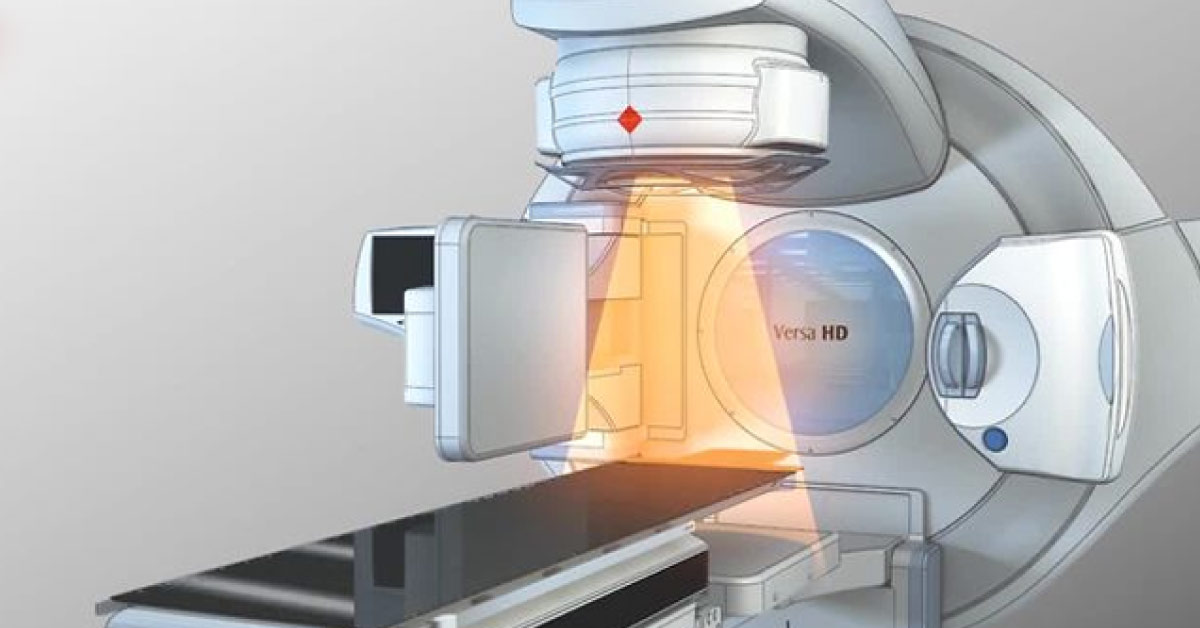Stereotactic Radiosurgery – The “Knives” of Radiation
Author:
Dr Vijetha J, Consultant – Radiation Oncology
Radiotherapy is one of the few branches of medicine which has been through significant changes since its inception due to the tremendous development of technology.
There is a peculiarity in its evolution; the radiation dose was delivered at a high value in a single sitting in earlier days. Slowly it evolved to get divided at many sittings (what we term “fractions”) and now thanks to radiosurgical techniques we could go back to delivering high doses in a single fraction.
How could we go back to doing this?
The principle behind this was very simple. There were numerous toxic effects on normal tissue, but with the latest technology, we can spare them so much that we could go back to single fraction treatment without any side effects.
- The beam of radiation gets divided into numerous beamlets (sometimes in arcs) which can be angled in many directions, which was not feasible earlier.
- The dose rate at which the patient’s treatment gets delivered is high (due to flattening filter free). This provides a faster treatment as short as in minutes.
- Most importantly, high-precision immobilisation devices (stereotactic head masks with/without bite blocks) provide highly accurate reproducibility of the patient’s position.
From where did we start and where have we reached in the field of Radiosurgery?
- Gamma knife radiosurgery to LINAC-based radiosurgery
What was earlier achievable in Gamma Knife Radiosurgery systems is now equally feasible in LINAC-based systems.
- Intracranial sites to extracranial sites
The introduction of Radiosurgery was primarily for intracranial diseases as the movement of the target within the skull is usually not possible. But with the advent of respiratory gating and 4D scans, we can now track the target movements in the extracranial sites. Hence, it’s feasible for us to treat even the extracranial sites.
- Invasive frames to noninvasive frames
Traditionally, there were invasive frames which were used to deliver a high precision Radiosurgery treatment. Whereas now, the online verification images (imaging just before delivering treatment) and faster treatment have made it possible to achieve millimetre accuracy with non-invasive frames too. This has also helped us treat slightly larger tumors with 2-5 sessions due to the repeated applicability of non-invasive frames.
How similar is it to surgery?
- Single session treatment
- A high dose delivered gives an ablative effect
How different is it compared to surgery?
- Non-invasive: no bleeding, no suture
- OPD basis treatment: no specific post-treatment care
Can it be used for the treatment of diseases other than cancers?
- As per radiobiology, a single fraction of a high dose is more efficient for benign tumors. In fact, we utilise the late vascular effects of Radiotherapy.
- It can be surprising for many to know that Radiosurgery is an option in many diseases where we affect the functionality of cells like Trigeminal Neuralgia, Mesial Temporal lobe epilepsy, Obsessive Compulsive Disorder, and Parkinson’s disease.
- There are benign tumors which can be effectively treated with Radiosurgery, like Meningioma, Acoustic Schwannoma, Pituitary adenoma, and Arteriovenous malformations.
The Radiosurgical option has to be carefully given as it’s not a replacement for surgery. But, many patients do get benefitted when radiosurgery is used in justified instances. Hence, it would be of profound significance to know this option when your near/dear ones are suffering from benign or malignant tumors. This efficient, simple, comfortable, OPD based treatment should be explored appropriately.





